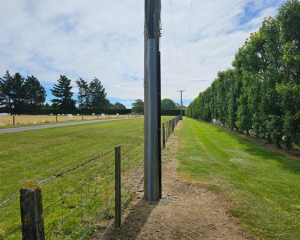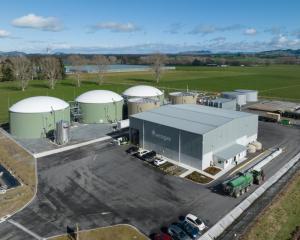
It is the fifth 50 basis point hike in a row - an unprecedented run - and takes the OCR from 3 per cent to 3.5 per cent.
"Some members highlighted that a larger increase in the OCR now would reduce the likelihood of a higher peak in the OCR being required," the Monetary Policy Committee said in its statement.
"Other members emphasised the degree of policy tightening delivered to date. Members also noted the lags in monetary policy transmission and a slow pass-through to retail interest rates. On balance, the Committee agreed that a 50 basis point increase was appropriate at this meeting."
The Committee noted the recent fall in the kiwi dollar.
"Higher global interest rates and increased risk aversion in global markets have placed downward pressure on the New Zealand dollar," it said. "However, a lower New Zealand dollar, if sustained, poses further upside risk to inflation over the forecast horizon."
There was a modest reaction to the news in the foreign exchange market, with the kiwi dollar rising by 15 basis points to US57.47c. In the wholesale interest rate market, the key two-year swap rate was unchanged at 4.48 per cent.
The Committee agreed it remains appropriate to continue to tighten monetary conditions at a pace to maintain price stability and contribute to maximum sustainable employment.
Core consumer price inflation is too high and labour resources are scarce.
Global consumer price pressures remain heightened. The global demand for goods and services is exceeding supply capacity, putting upward pressure on prices. Food and energy prices are being particularly exacerbated by the war in Ukraine.
A recent decline in oil prices and an easing in some supply-chain constraints have seen headline inflation measures fall in some countries, the Committee said.
"However, core measures of inflation have risen and persist. Central banks are tightening monetary conditions, implying a weaker growth outlook for New Zealand's trading partners."
In New Zealand, the level of domestic spending had remained resilient to date, in the face of slowing global growth and higher domestic interest rates. Employment levels were high, and household balance sheets remained resilient despite the fall in house prices, the Committee said.
"New Zealand's productive capacity is still being constrained by labour shortages and wage pressures are heightened. Overall, spending continues to outstrip the capacity to supply goods and services, with a range of indicators continuing to highlight broad-based pricing pressures."
Committee members agreed that monetary conditions needed to continue to tighten until they were confident there was sufficient restraint on spending to bring inflation back within its 1-3 per cent per annum target range
"The Committee remains resolute in achieving the Monetary Policy Remit."
Earlier
The Reserve Bank is widely expected to deliver another 50 basis point hike to the Official Cash Rate at 2pm today as it moves to try to head off inflation in the economy.
But with the global outlook darkening in the past few weeks, there are signs the central bank will have to hike further than its previously projected peak of 4 per cent.
Bank economists now forecast the OCR to peak next year at between 4.25 and 4.75 per cent.
Today, RBNZ Governor Adrian Orr just releases a short monetary Policy Review, rather than a full monetary policy statement, which means we won't get new economic forecasts.
So all eyes will be on the language and tone of the brief commentary that accompanies the rate decision.
Yesterday, the Reserve Bank of Australia surprised markets with a smaller than expected rate hike - 25 basis points as opposed to 50 basis points.
The Australian cash rate now sits at 2.60 per cent.
Local economists don't expect to see the RBNZ take this softer approach.
"We expect the RBNZ to repeat that the OCR will continue to rise at pace, and to signal a higher peak for this cycle," said Westpac chief economist Michael Gordon.
"[It] may say that the committee anticipates a higher OCR path than what was projected in the August statement."
Westpac last week shifted its forecast peak for the OCR to 4.5 per cent, following moves by ASB and ANZ predicting peaks of 4.25 and 4.75 per cent respectively.
"The key messages this time should remain similar to August's," said ASB chief economist Nick Tuffley.
The RBNZ should indicate it will keep lifting the OCR until it is "confident there is sufficient restraint" in place, and it is resolute in meeting its remit, he said.
The Herald will have full coverage of the RBNZ decision from 2pm including analysis and updates of any mortgage rate moves by the major banks.
The cash rate announcement follows a release of better-than-expected Crown accounts today.
The Government's financial statements were nearly $10b closer to surplus, thanks partly to tax on corporate earnings rising by $4.1 billion.
The OCR was introduced in 1999. It was at its highest level, 8.25 per cent, from July 2007 to July 2008. At that time, oil prices were soaring and the Global Financial Crisis was under way.
-By Liam Dann













